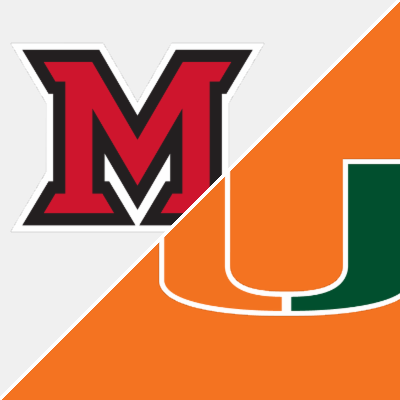Looking back at how the Miami Hurricanes program changed college football and what sparked “The U”
:no_upscale()/cdn.vox-cdn.com/uploads/chorus_image/image/72620644/miami.0.png)
The rise of the Miami Hurricanes was started by two men who came to the U in 1979.
The Miami Hurricanes’ path to respectability in the college football world is unlike that of any other program. Far from it actually. College football is a sport ingrained with tradition. Most of the blueblood programs have had numerous decades filled with success. But not the Canes.
For the vast majority of its history, Miami was afterthoughts in the college football world. Great players would come and go from time to time, such as George Mira, Sr., Ted Hendricks, Dennis Harrah, and several others, but none that would lift the program to the ranks of the respectable. There had even been talks disbanding the football program at one point.
That was until two men came to Coral Gables and sparked a change in the program that would lift the team to new heights: head coach Howard Schnellenberger and quarterback Jim Kelly. Schnellenberger was an assistant under Bear Bryant and was Don Shula’s offensive coordinator in Miami. As such, he came to Miami understanding what it takes to win at a very high level.
He mentioned a five-year plan to win the national championship. People laughed. However, at the end of five years, it was Schnellenberger who would have the last laugh.
And what would it take to get there? A leader on the field, for one. Conveniently, that came in the form of one Jim Kelly, who spurned in-state power Penn State — who wanted him to play linebacker — to come to Miami so he could play quarterback.
Kelly wasted little time in making an impact. In his first college start in 1979, he led the Canes to a 26-10 upset over Penn State in Happy Valley. The Canes ended up with a 5-6 record for the season, but the proof was in the pudding that Miami was capable of doing something special. The next season, Miami went 9-3 with a win over Virginia Tech in the Peach Bowl 20-10. The Canes also notched a win over then-No. 9 Florida State 10-9.
But it was in 1981 when Miami really started to turn some heads. The Canes finished 9-2, but those two losses came by a total of 11 points against #4 Texas and #16 Mississippi State on the road. After starting off the season with a thrilling come from behind win over No. 17 Florida, Miami shocked the college football world by knocking off No. 1 Penn State, 17-14. Kelly completed 13 of 25 passes for 220 yards and an 80-yard touchdown. It was a game that served notice that this was not the same Miami team of old.
1982 was a bit of a step back, with a 7-4 record, but the Canes would make a prophet out of Schnellenberger in 1983, his fifth year. After dropping the season opener to Florida 28-3, Miami rallied for 10 straight wins to end the regular season. In the process they held 7 teams to 7 points or less.
Miami ended up in the Orange Bowl against No. 1 Nebraska. A huge underdog, Miami — led by quarterback Bernie Kosar, who took over as the starter after Kelly graduated following the 1982 season — jumped out to a 17-0 first quarter lead behind two Kosar touchdown passes to tight end Glenn Dennison. With a 31-17 lead in the fourth quarter, Miami saw Turner Gill, Mike Rozier, and the Husker offense spring to life. Nebraska scored a touchdown with 48 seconds left, but instead of tying the game up, head coach Tom Osborne went for two and the win. Gill’s pass for running back Jeff Smith was broken up by Miami defender Kenny Calhoun to secure the win.
With losses by No. 2 Texas and No. 4 Illinois in their bowl games, Miami sprung up to a No. 1 ranking in the final polls, securing their first-ever national championship. Schnellenberger had achieved his promise of completing one of the sport’s greatest turnarounds in the time he said it would happen.
It was also the beginning of a massive shift in the college football landscape over the next decade. Although Schnellenberger left after the 1983 season, Jimmy Johnson continued the Canes’ rise. Miami would go on to win the national championship in 1987 under his tutelage after losing two bowl games in consecutive seasons that would have given them the national championship. With Michael Irvin strutting into end zones and Greg Mark and Daniel Stubbs leading a fast and hard-hitting defense up front that allowed one opponent to reach 17 points, Miami finished their season 12-0 with a 20-14 win over Oklahoma in the Orange Bowl.
The Canes would add on two more titles in 1989 and 1991 under head coach Dennis Erickson, who succeeded Johnson after he left to become the head coach of the Dallas Cowboys. The Canes toppled Alabama 33-25 in the Sugar Bowl to claim the school’s third national championship behind an MVP performance from QB Craig Erickson. Two years later, they would claim the AP crown for the school’s fourth title in clobbering Nebraska 22-0. Gino Toretta’s 257 passing yards and Miami’s swarming defense that held the Cornhuskers to 171 total yards carried the day in Nebraska’s first shutout loss since 1973.
And as Miami kept winning, the image of Miami as college football’s bad boys exploded. Players such as Irvin, Randal Hill, and Lamar Thomas made highlight reel catches followed by wild celebrations. Hard hitters like Michael Barrow, Robert Bailey, and many others would crush opponents and fire up the crowd with a vigor rarely seen. Antics such as getting off the plane in Phoenix for the 1987 Fiesta Bowl in fatigues turned most of the country against the Canes.
Flamboyant and physical, Miami turned into the bad boys of the sports world during that time, and the swagger of “the U” was born. And, like them or hate them – and indeed, most people hated them, Miami was at the top of the college football world.
And it all might not have happened if it hadn’t been for a young quarterback who spurned his native state and a grizzled old coach who had a winning vision.
Read more

